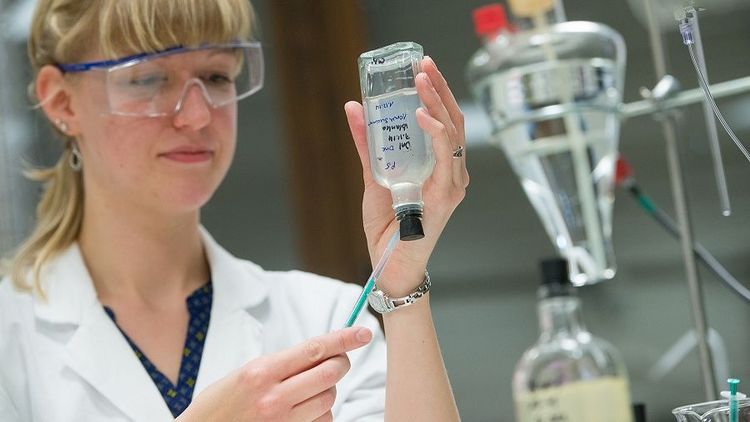Oldenburg. A number of bacterial species capable of degrading robust organic compounds in the absence of oxygen have been merged by microbiologists around Prof. Dr. Ralf Rabus to form a new genus. Still, until a few decades ago, those compounds were believed not to be degradable in the absence of oxygen. The work has recently been published in the latest issue of the Journal of Systematic and Evolutionary Microbiology.
The mainly rod-shaped species of the genus Aromatoleum, the name of the new group of bacteria, are capable of cleaving the aromatic rings of environmental toxins such as toluene and ethyl-benzene, commonly believed to be poorly degradable. These bacteria might facilitate restoration of contaminated soils and could also be used for biotechnical purposes. For example, a strain of Aromatoleum aromaticum degrades a particular aromatic compound by an until recently unusual combination of metabolic pathways, producing specifically only one of several stereochemical variants of a particular degradation product.
Members of the new genus could be interesting for the development of new biosensors as well. In a further study, Rabus and collegues demonstrated that A. aromaticum is able to detect and degrade a particular aromatic compound down to a minute threshold concentration.
Press Release University of Oldenburg [German only]
Original publications:
Ralf Rabus et al.: „Aromatoleum gen. nov., a novel genus accommodating the phylogenetic lineage including Azoarcus evansii and related species, and proposal of Aromatoleum aromaticum sp. nov., Aromatoleum petrolei sp. nov., Aromatoleum bremense sp. nov., Aromatoleum toluolicum sp. nov. and Aromatoleum diolicum sp. nov.“, Int J Syst Evol Microbiol, DOI: 10.1099/ijsem.0.003244
Julian Küppers et al: „Stereochemical insights into the anaerobic degradation of 4-isopropylbenzoyl-CoA in the denitrifying bacterium strain pCyN1“, Chem. Eur. J. 2019, 25, DOI: 10.1002/chem.201805837
Jannes Vagts et al.: Applied and Environmental Microbiology 84:e01018-18, https://doi.org/10.1128/AEM.01018-18



![[Translate to English:]](/f/5/_processed_/3/2/csm_ICBM-Logo-transparent-_91fe1c6774.png)
